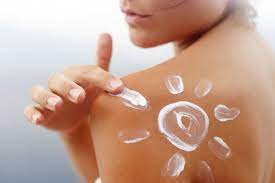
Effective Strategies for Protecting Skin from Sun Exposure
Excessive exposure to ultraviolet (UV) radiation from the sun is a major risk factor for skin damage, premature aging, and skin cancer. This article outlines the mechanisms of UV-induced skin damage and provides evidence-based strategies for protecting the skin from harmful sun exposure. Emphasis is placed on the importance of comprehensive sun protection, including the use of sunscreen, protective clothing, and behavioral modifications.
The skin, as the body’s largest organ, serves as the primary barrier against environmental factors, including UV radiation. While sunlight is essential for vitamin D synthesis, overexposure can lead to a range of dermatological issues, from sunburn and photoaging to an increased risk of melanoma and non-melanoma skin cancers. Understanding the science behind UV radiation and implementing effective protective measures are critical for maintaining healthy skin.
Mechanisms of UV-Induced Skin Damage:
UV radiation is divided into UVA, UVB, and UVC rays, with UVA and UVB being the most relevant to skin health. UVA rays penetrate deep into the skin, contributing to aging and DNA damage, while UVB rays primarily affect the outer layer, causing sunburn and playing a key role in the development of skin cancer. Prolonged exposure to these rays can lead to mutations in skin cells, immune suppression, and breakdown of collagen, resulting in both acute and chronic skin damage.
Strategies for Effective Sun Protection:
Broad-Spectrum Sunscreen Use:
Importance of SPF: Sunscreen is a critical tool in protecting the skin from UV radiation. A broad-spectrum sunscreen with an SPF (Sun Protection Factor) of at least 30 is recommended, as it blocks approximately 97% of UVB rays. Higher SPF values offer slightly more protection but should not replace other sun protection measures.
Application Guidelines: Proper application is essential for effectiveness. Sunscreen should be applied generously to all exposed skin 15-30 minutes before sun exposure. Reapplication is necessary every two hours, or more frequently if swimming, sweating, or toweling off.
Ingredient Considerations: Look for sunscreens containing ingredients like zinc oxide or titanium dioxide, which provide physical barriers to UV rays. For individuals with sensitive skin, mineral-based sunscreens may be preferable to chemical sunscreens, which can cause irritation.
Protective Clothing and Accessories:
Clothing: Wearing clothing that covers as much skin as possible is an effective physical barrier against UV radiation. Tightly woven fabrics and dark colors offer better protection compared to lighter, loosely woven fabrics. Clothing with a high Ultraviolet Protection Factor (UPF) rating provides enhanced protection.
Hats and Sunglasses: A wide-brimmed hat can shield the face, neck, and ears, areas often neglected by sunscreen. Sunglasses with 100% UV protection prevent harmful rays from damaging the eyes and the delicate skin around them.
Behavioral Modifications:
Avoid Peak Sun Hours: UV radiation is most intense between 10 a.m. and 4 p.m. Limiting sun exposure during these hours can significantly reduce the risk of skin damage. If outdoor activities are necessary during peak hours, seek shade whenever possible.
Monitoring UV Index: The UV Index is a valuable tool for assessing the strength of UV radiation on any given day. Higher index values indicate greater potential for skin damage, guiding decisions on the level of sun protection required.
Regular Skin Examinations: Early detection of skin changes is vital for preventing severe outcomes. Regular self-examinations and professional skin checks can help identify abnormal moles or lesions that may indicate skin cancer.
Protecting the skin from the harmful effects of UV radiation is essential for preventing sunburn, premature aging, and skin cancer. A comprehensive sun protection strategy that includes the use of broad-spectrum sunscreen, protective clothing, and behavioral modifications can significantly reduce the risk of UV-induced skin damage. By adopting these practices, individuals can enjoy the benefits of sun exposure while minimizing its harmful effects on the skin